Felt cherries, despite the name, belong to the genus Plum. An unpretentious, frost-resistant berry shrub was brought into the Russian Far East from Asia in the 19th century and spread over the whole country in a short time. This is due to the fact that planting felt cherries and caring for it does not cause special difficulties even for beginner gardeners.
Material Content:
The optimal varieties of cherries for the Moscow region
An excellent shrub for cultivation in the Moscow region and other areas of risky farming, where traditional cherry trees, due to harsh winters and long periods of drought in the summer, do not always take root and bear fruit.

The best regionalized varieties:
- "Natalie" - a branched shrub with a spreading crown, on which dark-maroon fruits weighing 5 g are formed in the middle of summer. Fruiting is noted in the second year after planting. A self-infertile variety with a life cycle of 18 years is characterized by high indicators of frost and drought tolerance.
- "Princess" - medium branching variety, not exceeding a height of 1.5 m. Yield from the bush varies between 8-9 kg. The shrub can grow after planting up to 17 years, demonstrating good tolerance of drought and frost.
- "Alice" - Another winter-hardy variety with dark red fruits, the average weight of which is 3 g. The fruiting phase is observed 3-4 years after planting in open ground.
- "Damanka" - A recently bred, winter-hardy variety with medium yield.Taste qualities of fruits weighing up to 3 g received the highest praise among other representatives of the culture.
- "Spark" - large-fruited variety with fruiting in the second half of July. Fruits weighing 4 g are distinguished by juicy pulp and a wonderful aroma.
Read also:youth cherry
The nuances of growing
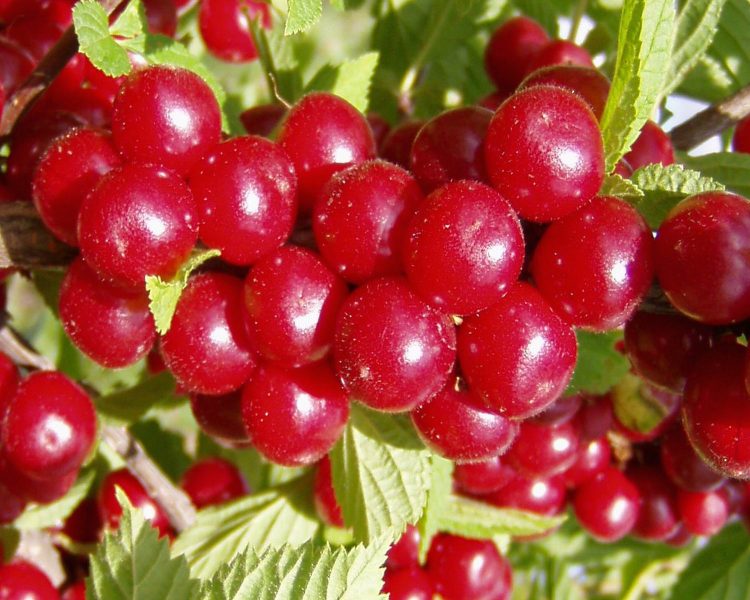
Growing felt cherries on a personal plot, gardeners note a number of such features:
- good productivity of a bush;
- friendliness of fruit ripening;
- drought and frost resistance;
- fast plant growth;
- compact crown;
- simplicity of agricultural cultivation.
Outdoor landing
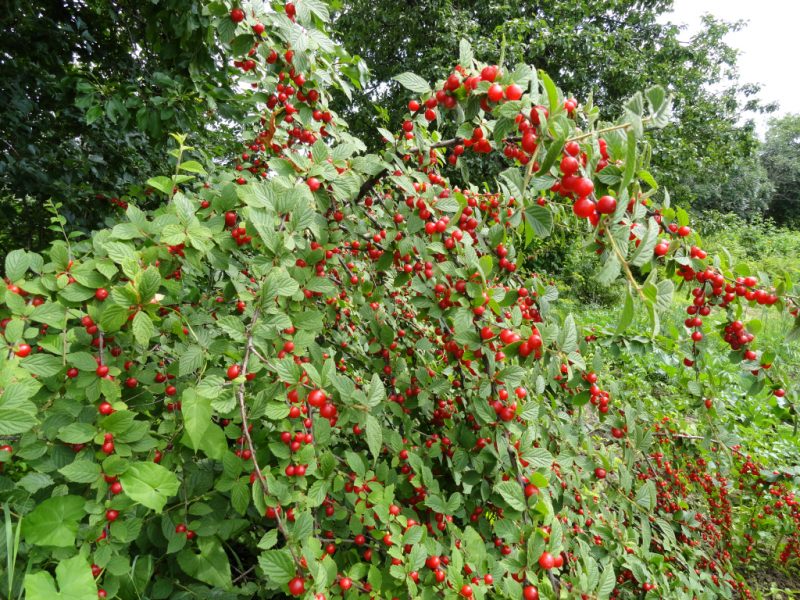
In order for the bush to take root successfully, and bear fruit well every year, it is worthwhile to correctly approach the planting, including choosing a place.
Soil preparation and location
For felt cherries, sunny, well-drained areas with a light, loose soil of a neutral or slightly acidic reaction are selected.
With a close occurrence of groundwater, it is necessary to give preference to elevated territories. The soil composition of the culture is unassuming.
How and when to plant?
The optimal time for planting seedlings of culture falls in the early spring before the sap flow begins. Autumn option is also possible: planting felt cherries in autumn can be carried out before October, which will allow seedlings to take root.
Landing work is carried out according to the following scheme:
- Digging pits with dimensions of 50x50 cm and a distance of 2 m from each other.
- At the bottom of each 5 kg of humus and 100 g of nitroammophoska are placed, which are sprinkled with soil.
- A sapling descends from above and is filled with soil so that the root neck is at the same level with it.
- The trunk circle is moistened and mulched with the help of sawdust, compost.
Attention! Due to the self-sterility of the culture, at least 3 varieties must be planted in close proximity to each other, which will ensure full pollination and a high yield.
Felt cherries: garden care
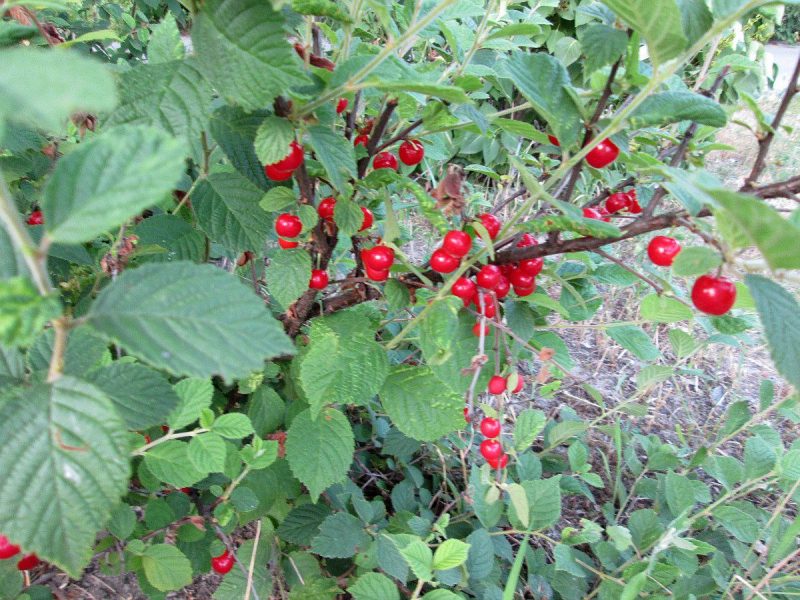
Caring for the bush does not take much time from the gardener, but requires an integrated approach.
Watering schedule
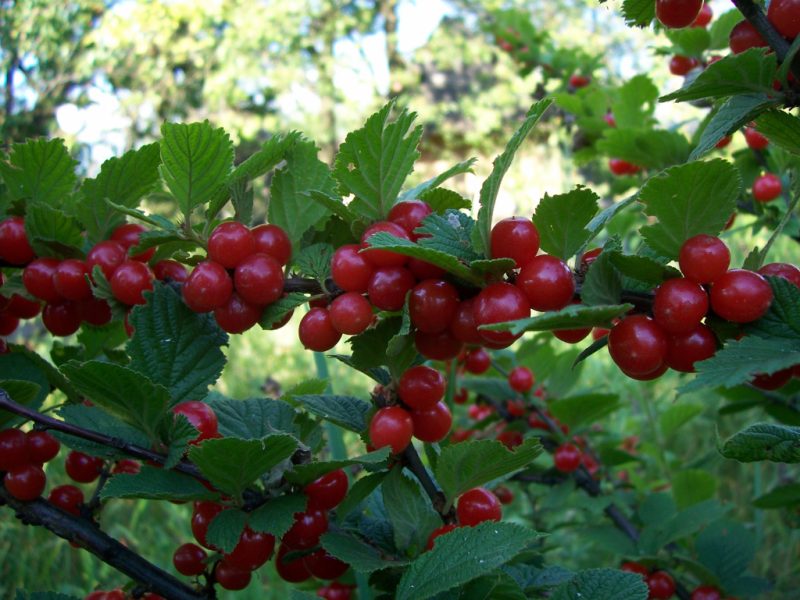
Felt cherries suffer more from excess moisture than from drought. Therefore, the bush should be watered moderately and only during periods of prolonged drought.
Fertilizing and fertilizers
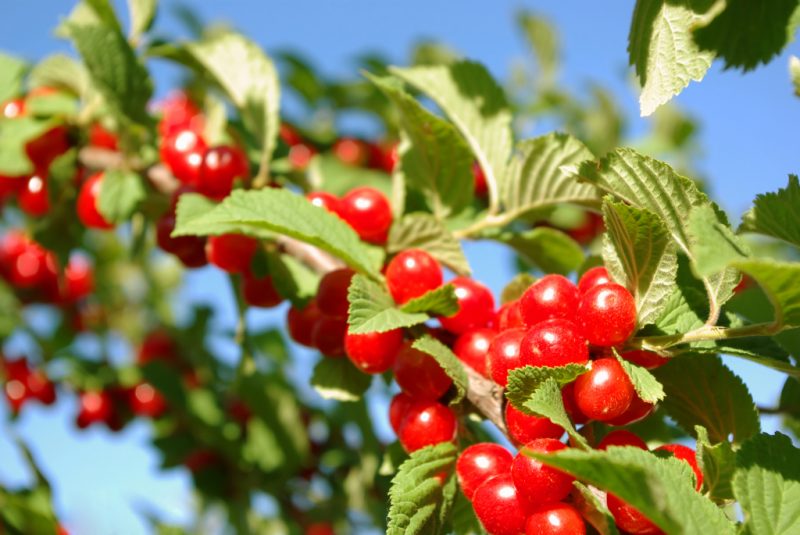
Shrub begins to be fed from the third year of life twice a season:
- In spring, complex mineral fertilizers with the inclusion of nitrogen are introduced along the edge of the trunk circle, after which the area is slightly loosened.
- After the harvest, nitrogen is excluded from the fertilizer, which stimulates the growth of green mass and slows down the pace of preparation of the plant for winter.
Cherry pruning
When forming the crown, annual seedlings are shortened to a height of 40 cm. Next year, all side shoots are cut to ⅓ length. For good results, no more than 12 well-bearing shoots are left annually. Also, a sanitary haircut is systematically carried out, in which the growing inside, sick and dried shoots are removed. The optimal pruning period is early spring.
Harvesting

Thanks to the ripening of fruits, harvesting can be done once. Depending on the variety and climatic characteristics of the region, the onset of the fruiting phase can fluctuate from mid-July to early August.
Preparing for the winter
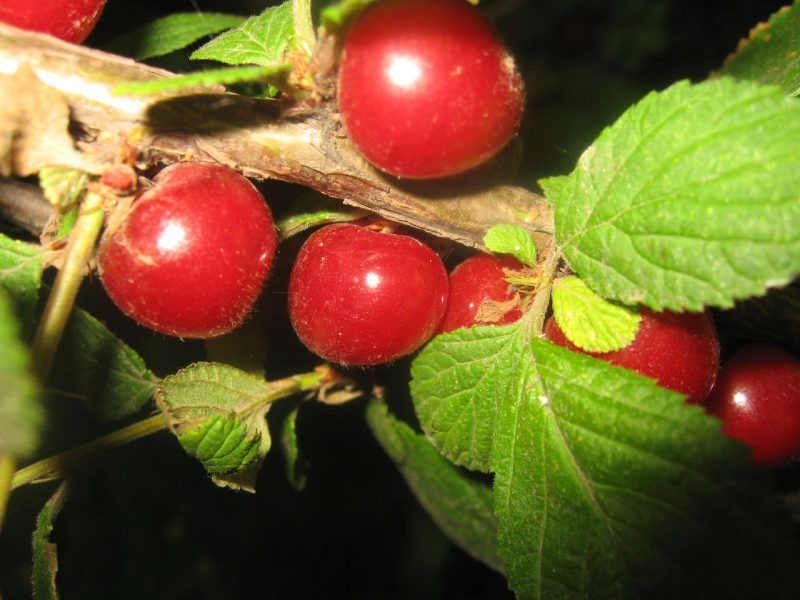
A frost-resistant plant can tolerate lowering temperatures to -45 ° C, so in adulthood does not need additional shelter. However, in the case of severe winters, before the culture reaches the age of three, it is recommended to mulch the trunk circle with the onset of cold weather and cover the plantings with fir spruce branches.
Pest and Disease Control
Among the diseases developing on cherry, moniliosis and pocket disease are distinguished, the preventive measures of which are carried out in two stages, the annual spring treatment of the bush with Bordeaux liquid. If it was not possible to prevent the disease, then all the affected shoots are cut off and burned, after which the bush must be sprayed with a copper-containing preparation. Of the pests in the culture, attacks of aphids, scale insects, cherry weevils and gall mites were recorded.Actara, Karbofos and other pesticides of similar action are effective protective agents.
Cherry propagation
The most common ways of propagating a culture are cuttings and breeding by layering. The seed method is used much less often due to the inability to maintain the varietal qualities of the specimen you like.
Cuttings
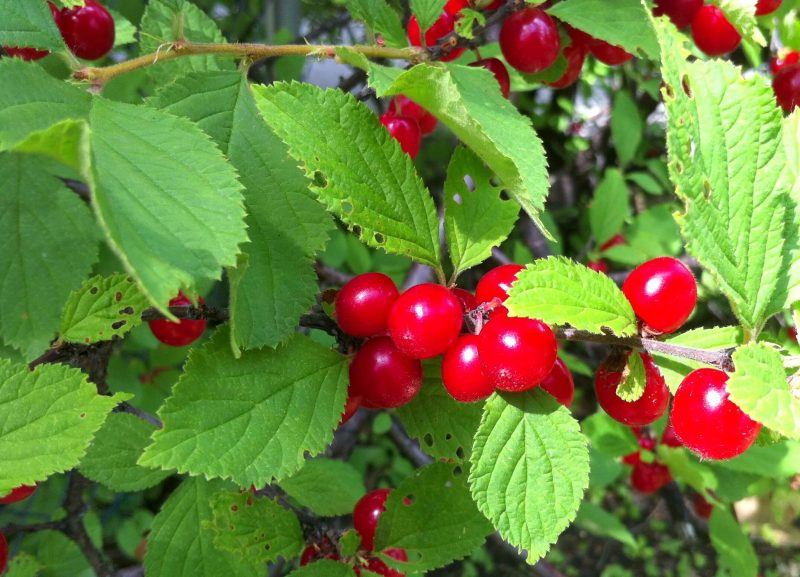
Applicable for large-fruited and high-yielding varieties method, in which:
- From annual shoots of the second and third order, cuttings 10-15 cm long are cut so that 2 cm are lignified.
- Cuttings are placed in the growth regulator for 12 hours with the lumber side.
- After the specified time, the planting material is buried in a light substrate of 3 cm.
- Plantings are covered with a film and several layers of gauze, which will protect the rooting cuttings from overheating.
Propagation by layering

A simple technique in the performance of which:
- A shallow groove is prepared near the bush.
- A young shoot is selected and placed in the groove, where it is fixed with wire brackets
- The horizontal layer is sprinkled with soil.
- After the formation of the roots, the layers are separated and transplanted to a permanent place.
Thus, if you take a responsible approach to all agricultural activities related not only to care, but also to planting, then growing a healthy felt cherry and getting an annual rich harvest is not difficult.












